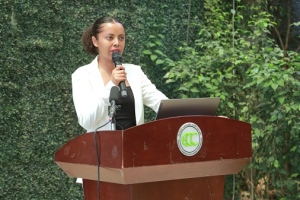BY MENGISTEAB TESHOME
Last week, the Ethiopian Foreign Service Training Institute and the United Nations Institute for Training and Research (UNITAR) co-organized the workshop on environmental diplomacy that encompasses a number of Ethiopian ambassadors and diplomats, according Ministry of Foreign Affairs.
The four-day workshop covered the basics in climate change science and Climate Diplomacy, international climate change policy framework and negotiations, including international considerations for climate change decision-making.
Ambassador Redwan Hussien said the workshop demonstrates Ethiopia’s unwavering determination to be at the forefront of climate change issues in the international arena.
Noting the recurrent drought, flooding, and locust invasion in the Horn of Africa, Ambassador Redwan said, it is vital that we give due attention to climate diplomacy to enhance support to mitigation and adaptation interventions at the grassroots level.
The Ethiopian Herald had approached Ecosystem Rehabilitation and Combating Desertification Environment, Forest and Climate Change Commission Directorate Director and Focal point of the Ethiopian Great Green Wall Abebe Seifu, to share the progress made so far, he noted that GGW was Endorsed in 2007 by the African Union (AU), the Great Green Wall (GGW) is one of the earliest international land restoration initiatives that brings together African countries and international partners, under the leadership of the African Union (AU) and Pan-African Agency of the Great Green Wall (PAAGGW). A broad set of African and international partners are involved in the initiative through project implementation and development, or through the funding of several ongoing and future projects in all GGW countries.
The aim of the GGW was originally to create a 15 km wide and 8,000 km long tree barrier across eleven countries of the Sahel (Burkina Faso, Chad, Eritrea, Djibouti, Ethiopia, Mauritania, Mali, Niger, Nigeria, Senegal, and Sudan). This Pan-African movement is now being supported by a number of countries across Africa as well as international partners and donors under the political auspices of the African Union. The GGW initiative is coordinated by the PAAGGW, with its Secretariat in Nouakchott, Mauritania. In recent years, the vision of the GGW has evolved into a more comprehensive and integrated development approach.
Combining the intervention zones reported by the eleven Sub-Saharan GGW member states, the total area of the GGW initiative extends to 152 million hectares, with the largest intervention zone located in Niger, Nigeria, Mali, Ethiopia and Eritrea. Within this intervention area, the land rehabilitation activities reported by GGW countries between 2007 and 2019 add up to 3.77 million hectares. This is complemented by another 11.8 million hectares of land restored within GGW countries but outside the strict intervention zones.
In most of the GGW member states several achievements have been recorded, with some countries being more successful than others. As a matter of fact, some countries have started the implementation of the GGW activities since 2007, while others have started as late as in 2014, when the GGW declaration was ratified. The disparities between the restoration achievements of different countries are also due to country-specific conditions which are slowing down the implementation process of the planned activities.
However, despite these progresses, the impacts related to climate change keep increasing in the region and it is not counterbalanced by the actual pace of implementation of the GGW activities
Meanwhile President of the African Development Bank Group at the One Planet Summit Dr. Akinwumi Adesina, Great Green Wall Investment Summit, noted that as we rebuild from the coronavirus and its impacts on our world, we must recalibrate growth. We must prioritize growth that protects the environment and biodiversity, and we must de-prioritize growth that compromises our global commons.
The Great Green Wall is part of Africa’s environmental defense system — a shield against the onslaughts of desertification and degradation. The future of the Sahel region of Africa depends on the Great Green Wall. Without the Great Green Wall, in the face of climate change and desertification, the Sahel may disappear.
The Great Green Wall is a wall worth building. A wall that brings people together, not one that pulls them apart. A wall that insulates, not one that isolates. A wall that protects our collective existence. A wall for the environment – a wall for the planet.
By building the Great Wall, we will secure the Sahel, reduce climate change, reduce migration and improve the lives of people.
The African Development Bank has launched a 20 billion USD Desert-to-Power program to build the largest solar zone in the world in the Sahel. This will provide electricity for 250 million people and help to protect the Great Green Wall. If there is no access to energy, the Great Green Wall will be no more than trees waiting to be turned into charcoal.
The Ethiopian herald January 13/2021




